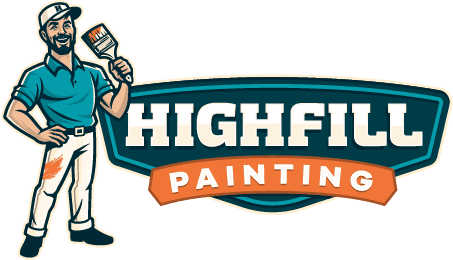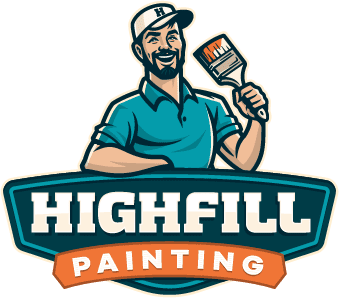9 Essential Safety Concerns When Painting

Every person involved in a painting project—from homeowners to professional painters—should take specific safety steps. These measures can range from diligently reading the paint labels to maintaining proper ventilation during and after the project. Keep reading to learn how to safeguard yourself and your loved ones while adding a splash of color to your life.
What Are the Health Concerns?
Most paints release chemicals into the air, raising important safety concerns when painting. The health effects of these chemicals can vary greatly, and the likelihood and severity of a reaction will depend on multiple factors. These include the amount of chemicals present in the air, the duration of exposure, and individual factors like age, existing medical conditions, and susceptibility.
Immediate symptoms reported after exposure to some of these chemicals include eye and throat irritation, headaches, dizziness, and vision problems. For professional painters who are regularly exposed to high levels of paint vapors over long periods, the risks are even higher. Certain chemicals in paints have been found to cause damage to the nervous system, liver, and kidneys. Additionally, some of these chemicals have been shown to cause cancer or reproductive and developmental issues in laboratory animals.
Because of these safety concerns when painting, it’s strongly advised that susceptible individuals like young children and people with respiratory issues avoid exposure to paint vapors. Pregnant women should also avoid painting projects and limit their time in freshly painted rooms, particularly when oil-based paints have been used.
9 Safety Concerns When Painting
1. Choose the Right Type of Paint
Selecting the correct type of paint is not just a question of color and finish; it’s also a significant safety concern when painting. You generally have two main options: water-based (latex) and oil-based (alkyd) paints. Latex paints are often recommended for indoor use as they emit fewer chemicals and are usually low in volatile organic compounds (VOCs). Opting for this option ensures better indoor air quality, making it a healthier choice. Always make it a habit to read the label for warnings or consult the paint supplier. Some paints are formulated with fewer toxic substances, which can further reduce health risks.
2. Proper Storage is Crucial
When it comes to safety concerns when painting, how you store your paint and painting supplies is crucial. Many paints and associated products like thinners and strippers contain VOCs, which are not only harmful when inhaled but can also be highly flammable. These chemicals can evaporate easily, filling your space with dangerous fumes. To counteract this, always opt for products labeled as ‘low-VOC.’
For those that do contain higher levels of VOCs, store them in their original containers, ensuring the lids are tightly sealed. It’s best to keep these items in a well-ventilated area away from living spaces and potential sources of ignition, like gas appliances.
3. Ventilate the Area
Good ventilation is often overlooked but is key in addressing safety concerns when painting, especially indoors. The painting process usually involves activities like patching holes and sanding surfaces, which can create a considerable amount of dust.
Additionally, even water-based paints can release some vapor into the air. For these reasons, proper ventilation is crucial. One easy and effective method is to place a box fan in a window, pointing it to blow air outside. Then, open another window or door on the opposite side of the room. This cross-ventilation will help remove lingering dust and disperse harmful VOCs more effectively.
4. Quality Dust Masks Are Essential
One of the major safety concerns when painting is protecting your lungs, especially when sanding surfaces before painting. While dust masks are essential, it’s crucial to opt for quality over price. Masks with an N95 certification are designed to filter out harmful particles effectively.
Look for features like a foam seal around the nose and strong elastic straps to ensure a snug fit. Some masks even come with valves to make breathing easier. Remember that these masks are effective for dust but won’t protect you from VOCs found in paints and other products.
5. Opt for Organic Vapor Respirators for Full Protection
Standard dust masks might keep out dust, but they’re no match for volatile organic compounds (VOCs), which can be harmful to your lungs and even your brain. When dealing with paints or cleaning products that emit strong fumes, you should wear an organic vapor respirator. These can be fitted with cartridges specifically designed to filter out harmful organic compounds.
When shopping for one, match the cartridge to the chemicals you’ll be working with; this information can be found on the product label. Follow all instructions carefully to make sure you’re getting the protection you need.
6. Ladder Safety
When it comes to safety concerns when painting, physical safety is also a big deal, particularly when using ladders. Ladders are associated with a significant number of accidents, leading to emergency room visits and, in some cases, fatal outcomes. To avoid becoming another statistic, practice good ladder safety.
Always place your ladder on a stable, even surface, and make sure it’s the right height for the task. Follow the ‘4-to-1 rule,’ which says for every four feet of ladder height, the bottom should be one foot away from the wall or object it’s leaning against. And, of course, always keep both feet on the ladder—never lean or reach so far that you lose your balance.
7. Wear Gloves For Hand Protection
One aspect that often gets overlooked is hand protection. Various solvents in paints and paint strippers can not only irritate your skin but also penetrate it, leading to nerve or even organ damage. Always have gloves handy for different tasks. Disposable latex, vinyl, or nitrile gloves are suitable for lighter tasks like staining and varnishing. However, for heavy-duty jobs involving harsh solvents like paint thinners or acetone, you’ll want to use thick, chemical-resistant gloves.
8. Use Paint Strippers
Sometimes, scraping and sanding just won’t cut it, and you need to resort to paint strippers. While these products can be highly effective, they come with their own set of safety concerns. Always work in a well-ventilated space, and even better if you can work outdoors.
Wear safety goggles to shield your eyes and chemical-resistant gloves to protect your hands. Cover any exposed skin with proper clothing. Be mindful that some paint strippers are highly flammable, so read all safety instructions on the container carefully, including guidelines for safe disposal.
9. Safe Disposal of Oily Rags
You might not think of fire hazards when painting, but certain safety concerns, like the disposal of oily rags, should not be overlooked. When piled up, oily rags can spontaneously combust, surprisingly leading to several fires. To prevent this, never leave oily rags in a pile. Once you’re done using them, spread them out flat to dry. Once the oil has dried, it’s safe to dispose of the rags.
Contact Your Trusted Painter in the Greater Richmond and Surrounding Areas
When it comes to safety concerns when painting, why take chances? At Highfill Painting, we prioritize your well-being, taking all necessary precautions to make sure your painting project is not only beautiful but also safe. From choosing the right types of paint and storage methods to proper ventilation and personal protection, we have it all covered for you.
Professional painting companies like ours bring an added layer of safety and quality to your project. We use top-notch equipment and materials, and our experienced team is trained to handle all types of scenarios safely and efficiently. This frees you from worrying about things like chemical exposure, fire risks from oily rags, or the correct use of ladders and masks. We do the hard work so you don’t have to, ensuring a seamless and safe painting experience.
Trust the professionals. Contact us today for a free quote and give yourself the peace of mind you deserve!



